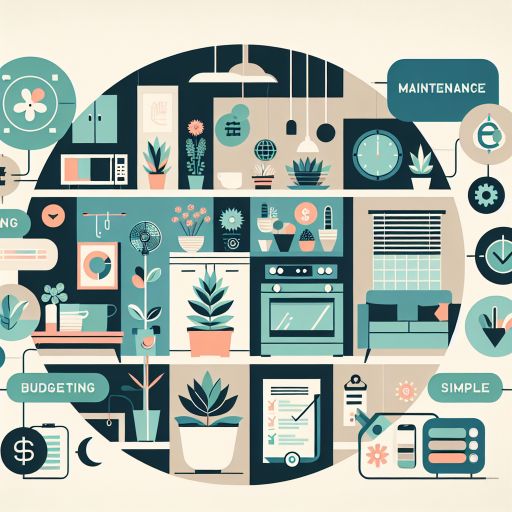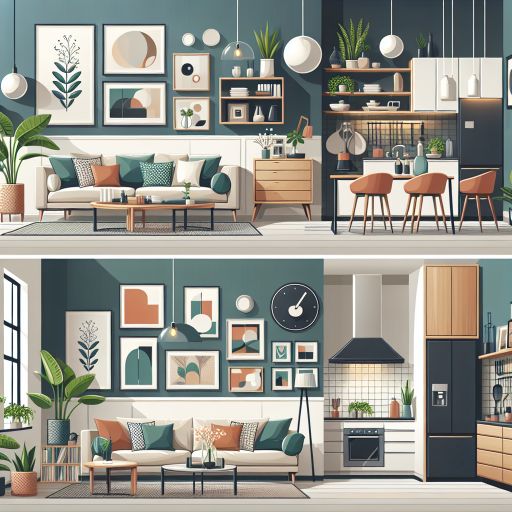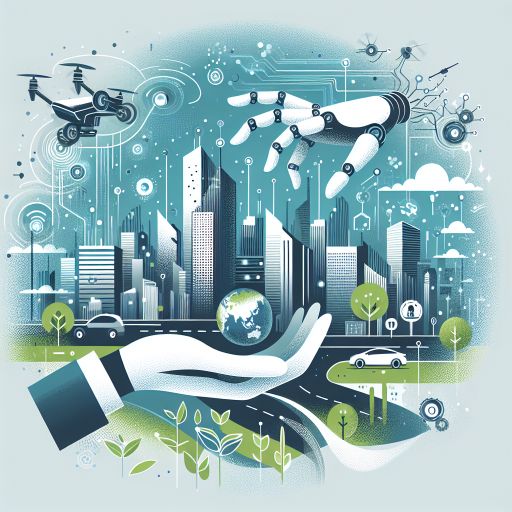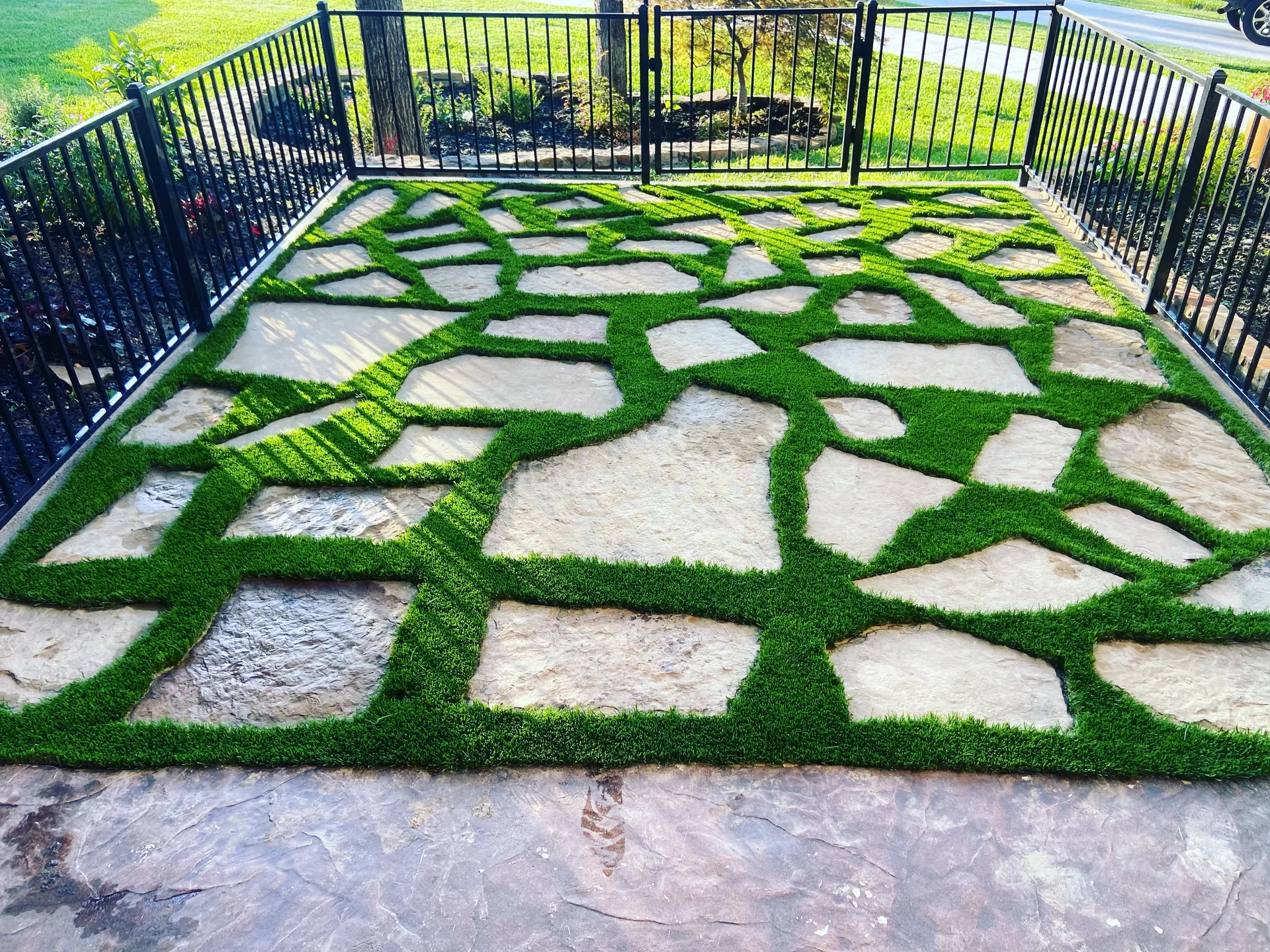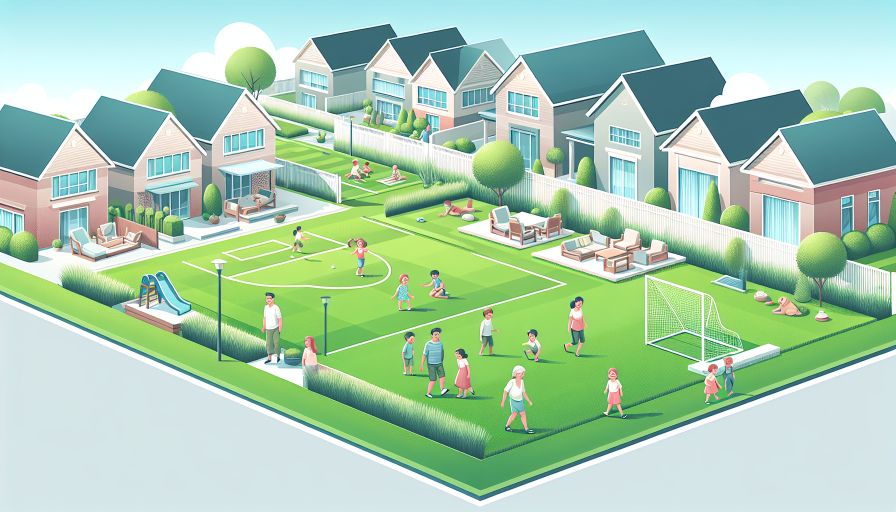
- Introduction to Artificial Grass: History and Market Trends
- Environmental Impacts and Sustainability of Artificial Grass
- Cost Analysis: Installation and Long-Term Savings
- Low Maintenance Benefits and Practical Considerations
- Health and Safety Aspects for Families
- Aesthetic and Functional Enhancements for Residential Spaces
- Conclusion: Future Prospects and Technological Advancements
Introduction to Artificial Grass: History and Market Trends
Artificial grass, also known as synthetic turf, has a history that dates back to the 1960s when it was first introduced by Monsanto under the brand name “AstroTurf.” Initially developed for use in sports stadiums, synthetic turf rapidly gained popularity for its durability and low maintenance requirements. Over time, advancements in materials and manufacturing processes have led to significant improvements in the appearance and functionality of artificial grass, making it an increasingly popular choice for residential spaces.
The market for artificial grass has seen substantial growth, driven by factors such as urbanization, water conservation efforts, and the desire for low-maintenance landscaping solutions. According to a market research report by Grand View Research, the global synthetic turf market size was valued at USD 2.6 billion in 2020 and is expected to expand at a compound annual growth rate (CAGR) of 5.4% from 2021 to 2028. This growth is attributed to the rising demand for artificial grass in both commercial and residential applications.
Several key trends are shaping the artificial grass market. One significant trend is the increasing adoption of water-efficient landscaping solutions in regions facing water scarcity and drought conditions. Artificial grass requires no watering, representing a practical alternative for homeowners looking to reduce their water usage. Another trend is the improved realism of synthetic turf; modern products closely mimic the look and feel of natural grass, which appeals to homeowners who want the aesthetic benefits of a lush, green lawn without the upkeep.
Innovations in artificial grass technology have also played a crucial role in market expansion. Modern synthetic turf products utilize advanced materials such as polyethylene and polypropylene, which offer enhanced durability, UV resistance, and flexibility. Additionally, the use of infill materials such as silica sand or crumb rubber provides added stability and cushioning, making the surface safer and more comfortable for everyday use.
Overall, the artificial grass market is poised for continued growth as homeowners seek sustainable, convenient, and aesthetically pleasing landscaping solutions. The combination of technological advancements and evolving consumer preferences indicates a positive outlook for the future of synthetic turf in residential applications.
Environmental Impacts and Sustainability of Artificial Grass
Artificial grass is often promoted as an environmentally friendly alternative to natural lawns, but its environmental impacts and sustainability are topics of significant interest and debate. It is important to examine both positive and negative aspects to provide a comprehensive understanding.
One major environmental benefit of artificial grass is its water conservation. Traditional grass lawns require substantial amounts of water for maintenance, especially in regions with hot and dry climates. According to the Environmental Protection Agency (EPA), outdoor water use accounts for about 30% of total household water consumption in the United States, with lawns being a major contributor. By switching to artificial grass, homeowners can significantly reduce their water usage.
Another advantage is the reduced need for chemical fertilizers and pesticides. Natural lawns often require fertilizers, herbicides, and pesticides to maintain their appearance and health. These chemicals can leach into the soil and waterways, potentially harming wildlife and ecosystems. Artificial grass eliminates the need for these chemicals, thus reducing the potential for environmental contamination.
However, there are environmental concerns associated with artificial grass. One key issue is its production and disposal. Artificial turf is typically made from polyethylene, polypropylene, and nylon—materials derived from fossil fuels. The manufacturing process of these materials involves energy consumption and greenhouse gas emissions. Additionally, while some artificial grass products are partially recyclable, recycling options are limited, and many used turfs end up in landfills.
A study by the University of California, Berkeley, estimated that the life cycle of synthetic turf, including production, transportation, installation, maintenance, and disposal, generates significant carbon emissions. This estimate underscores the importance of considering the entire lifecycle of artificial grass when assessing its environmental impact.
Another concern is the heat island effect. Artificial grass can absorb and retain heat, making it much hotter than natural grass. Tests by the Penn State Center for Sports Surface Research found that surface temperatures of artificial grass can be significantly higher than those of natural grass, sometimes by more than 30 degrees Fahrenheit. This heat retention can contribute to increased ambient temperatures, particularly in urban areas.
On the positive side, some advancements aim to mitigate these concerns. For example, innovations in manufacturing have led to the development of products that incorporate recycled materials, such as recycled rubber infill. Additionally, some artificial grass products are designed to be more heat-reflective, thus reducing their contribution to the heat island effect.
Overall, the environmental impacts and sustainability of artificial grass encompass both beneficial and detrimental aspects. While it offers substantial water savings and reduces the need for harmful chemicals, it also presents challenges related to material production, heat retention, and end-of-life disposal. Homeowners should weigh these factors when considering artificial grass as an option for their residential spaces.
Cost Analysis: Installation and Long-Term Savings
When evaluating the adoption of artificial grass for residential spaces, a crucial consideration for homeowners is the cost analysis, encompassing both the installation expenses and the potential long-term savings. By examining these financial aspects in detail, homeowners can make informed decisions about investing in artificial grass.
Installation Costs
The initial cost of installing artificial grass can vary significantly based on several factors, including the size of the area, the quality of the turf, and the geographic location. According to industry data, the average cost of artificial grass installation ranges from $5 to $20 per square foot. This cost generally includes materials, labor, and additional items such as infill and base preparation materials.
High-quality artificial grass, which often mimics the texture and appearance of natural grass, tends to be more expensive. Moreover, professional installation involves site preparation, which includes removing any existing grass or soil, leveling the surface, and ensuring proper drainage. These steps are essential for a successful and long-lasting installation but can add to the overall cost.
Long-Term Savings
While the upfront cost of artificial grass installation can be substantial, homeowners can realize significant long-term savings in several areas:
- Water conservation: Traditional grass lawns require regular watering to maintain their appearance, contributing to substantial water bills. Artificial grass eliminates this need, leading to considerable savings, especially in arid regions or areas with water restrictions.
- Reduced maintenance expenses: Natural lawns require ongoing maintenance, including mowing, fertilizing, pest control, and reseeding. These activities not only incur direct costs but also demand time and effort. Artificial grass, on the other hand, requires minimal maintenance, primarily involving periodic cleaning and brushing.
- Longevity: High-quality artificial grass can last between 10 to 20 years, depending on the usage and care. This durability ensures that the initial investment is amortized over a longer period, offering a favorable cost-to-benefit ratio.
Financial Incentives
In some regions, homeowners may be eligible for financial incentives to reduce the initial cost of artificial grass installation. These incentives may include rebates or subsidies provided by local governments or water conservation programs. Homeowners are encouraged to inquire about such programs to maximize their financial benefits.
In conclusion, the cost analysis of artificial grass for residential spaces demonstrates that while the initial investment can be considerable, the long-term savings and potential financial incentives make it a cost-effective and pragmatic choice for many homeowners. By carefully considering these factors, families can achieve both economic and environmental benefits.
Low Maintenance Benefits and Practical Considerations
One of the most notable advantages of artificial grass is its low maintenance requirement. Unlike natural grass, which demands regular mowing, watering, fertilizing, and pest control, artificial grass allows homeowners to enjoy lush greenery without the extensive upkeep.
Artificial grass does not grow or require mowing, saving time and rental or purchase costs associated with lawn mowers. According to home improvement experts, the average American spends roughly 70 hours per year on lawn care activities. By opting for artificial grass, homeowners can reclaim this time or direct it towards other valuable pursuits.
Natural lawns demand significant amounts of water to maintain their appearance and health, especially in arid climates. Data from the Environmental Protection Agency (EPA) indicates that outdoor water use accounts for nearly 30% of household water consumption. Artificial grass eliminates the need for irrigation systems, consequently reducing water bills and conserving a critical natural resource.
Moreover, artificial grass is less susceptible to damage from weather conditions. It remains green and intact under various weather scenarios, including heat, frost, and heavy rainfall. Unlike natural grass, it does not form muddy patches or become waterlogged, which are common problems in wet climates.
Another practical consideration is the reduction of pests and allergens. Natural grass can harbor insects, weeds, and pollen that may cause allergic reactions. By using artificial grass, families can reduce their exposure to these allergens and create a more pleasant outdoor environment.
Artificial grass also addresses the issue of wear and tear. High-traffic areas in natural lawns often suffer from patches and uneven growth. Artificial grass, with its durability and resilience, maintains a consistent appearance even in frequently used spots, such as play areas or paths.
With advancements in manufacturing technology, artificial grass has become more realistic and durable. Modern varieties mimic the look and feel of natural grass, offering a visually appealing alternative without the hassles of traditional lawn care. This innovation ensures that homeowners do not have to compromise on aesthetics while enjoying the practical benefits.
In summary, the low maintenance benefits and practical considerations make artificial grass an appealing option for homeowners and families. By choosing artificial grass, individuals can enjoy a beautiful, functional outdoor space with minimal effort and maximum convenience.
Health and Safety Aspects for Families
When considering the installation of artificial grass in residential spaces, understanding the health and safety aspects for families, particularly those with children and pets, is crucial. Artificial grass, while primarily known for its aesthetic and low maintenance benefits, also offers several health and safety advantages.
Allergen Reduction
Natural grass can often be a source of allergens that may cause reactions in sensitive individuals. Grass pollen, for example, is a common allergen that can trigger seasonal allergies. According to the American College of Allergy, Asthma, and Immunology, grass pollen is a significant contributor to hay fever symptoms. Artificial grass, being synthetic, does not produce pollen and can potentially reduce allergen exposure, benefiting individuals who suffer from grass pollen allergies.
Injury Prevention
Artificial grass can provide a safer playing surface for children. Traditional grass lawns can develop uneven patches, holes, or become slippery when wet, increasing the risk of trips and falls. Many modern artificial grass products are designed with cushioned underlayers that provide shock absorption, making them safer for activities such as running and playing. Research from the Institute of Sports Facilities found that the shock-absorbing properties of artificial surfaces can help in reducing minor injuries like scrapes and bruises.
Pest Control
Artificial grass can help in minimizing the presence of pests that are commonly found in natural lawns, such as ticks, fleas, and other insects. The Centers for Disease Control and Prevention (CDC) highlights that ticks and fleas can carry diseases that are harmful to pets and humans. Artificial grass offers a less hospitable environment for these pests, reducing the likelihood of bites and infestations.
Chemical Exposure
Natural grass maintenance often involves the use of pesticides, herbicides, and fertilizers, which can be harmful if ingested or contacted by children and pets. A study from the Journal of Environmental Science and Health points out the potential health risks associated with these chemicals. In contrast, artificial grass generally requires no such chemicals for its upkeep, thereby lowering the risk of exposure to potentially harmful substances.
Heat Considerations
One of the notable concerns regarding artificial grass is its tendency to heat up more than natural grass. Studies conducted by the Penn State Center for Sports Surface Research have shown that artificial turf can become significantly hotter than natural grass, posing a risk of heat-related injuries. Solutions to this issue include the use of cooling infills and the implementation of irrigation systems to reduce surface temperatures. It is advisable for homeowners to consider these options, especially in regions with high temperatures.
Hygiene and Cleanliness
Maintaining hygiene on artificial grass is relatively straightforward due to its non-absorbent nature. Unlike natural grass, which can harbor bacteria and mold, artificial grass allows for easy cleaning using water and mild detergents. This can be particularly beneficial for families with pets, ensuring that areas where pets play and relieve themselves remain clean and sanitary. Additionally, some artificial grass products come with antimicrobial properties, further enhancing their hygiene.
Overall, while artificial grass offers substantial health and safety benefits for residential use, it is important for homeowners to consider their specific needs and regional conditions to maximize these advantages. The reduced allergen exposure, improved injury prevention, minimal chemical use, and enhanced hygiene all contribute to creating a safe and enjoyable environment for families.
Aesthetic and Functional Enhancements for Residential Spaces
Artificial grass has significantly evolved in terms of aesthetics and functionality, offering homeowners numerous enhancements for residential spaces. Its versatility ensures that it can mimic the lush, green appeal of natural grass while providing durability and consistency under various conditions.
One of the main aesthetic advantages of artificial grass is its ability to maintain a visually appealing, green appearance throughout the year. Unlike natural grass, which can suffer from seasonal variations, drought, or pests, artificial turf remains consistently attractive. This constant greenery can boost curb appeal and contribute to the overall aesthetic value of a residential property.
Functionally, artificial grass is highly adaptable, making it suitable for a range of applications within residential settings. It can be installed in backyards, front lawns, and even on rooftops or balconies where natural grass might not thrive. Its versatility also extends to creating safe and durable play areas for children and pets. These areas are not only aesthetically pleasing but also practical, as they reduce the risk of muddy patches and uneven surfaces that are common with natural grass.
Artificial turf can also enhance outdoor living spaces. Many homeowners are using it to create visually coherent and functional outdoor rooms, such as patios, garden paths, and pool surrounds. The non-slip surface of artificial grass makes it a safe option around pools, where wet conditions are typical. Additionally, it can be used to design unique landscaping features like decorative green areas that require minimal upkeep.
The consistent appearance and low maintenance requirements of artificial grass can also be beneficial for rental properties. Landlords and property managers often choose artificial turf to improve the aesthetics of rental units without incurring the ongoing costs associated with the maintenance of natural grass. This low-maintenance option can attract potential tenants who appreciate the look of a well-kept lawn without the associated labor.
Moreover, artificial grass can integrate seamlessly with other landscape elements, such as stone pathways, flower beds, or water features. The combination of these elements can result in a harmonious and appealing outdoor environment that is both functional and enjoyable for homeowners and their families.
Conclusion: Future Prospects and Technological Advancements
Artificial grass has transformed from a niche product to a mainstream landscaping solution due to its numerous advantages. As we look towards the future, the prospects for artificial grass appear promising, driven by continual technological advancements, increasing environmental consciousness, and evolving consumer preferences.
Technological Advancements
Recent years have seen significant innovations in artificial grass technology. New manufacturing processes have resulted in products that closely mimic the appearance and texture of natural grass. Improvements in fiber technology have enhanced durability and resilience, making artificial grass more suitable for diverse climatic conditions and various applications.
Additionally, advancements in specialized infill materials have contributed to better drainage and temperature regulation, addressing common concerns such as water stagnation and heat retention. Future developments are likely to focus on increasing the sustainability of artificial grass by incorporating more recyclable and eco-friendly materials.
Environmental Considerations
As environmental awareness grows, homeowners are placing greater importance on sustainable solutions for their residences. While artificial grass itself is a synthetic product, its environmental footprint can be mitigated through the use of recycled components and low-impact production methods. Companies are investing in research to create artificial grass products that offer lower carbon footprints, reduced water consumption, and minimal chemical use.
Market Growth and Trends
The market for artificial grass is expected to continue expanding. According to industry reports, the global artificial grass market is projected to grow at a compound annual growth rate (CAGR) of about 7% over the next five years. This growth is driven by increasing urbanization, rising water conservation initiatives, and the desire for low-maintenance landscaping solutions.
- Urban areas are particularly seeing higher adoption rates due to the limited availability of natural lawns and the need for year-round greenery.
- Water conservation efforts, especially in regions prone to drought, make artificial grass an attractive alternative.
- The convenience factor also plays a significant role, as busy homeowners look for ways to reduce the time and effort spent on yard maintenance.
Consumer Preferences
Homeowners are becoming more discerning in their purchases, seeking products that offer a combination of aesthetics, functionality, and sustainability. The shift towards outdoor living spaces has also led to a growing interest in artificial grass, which can enhance patios, playgrounds, and recreational areas.
In conclusion, the future of artificial grass in residential spaces looks bright. Continuous innovation, coupled with a heightened focus on sustainability and efficiency, will likely drive further adoption. For homeowners and families looking to enhance their residential spaces, artificial grass presents a compelling, forward-thinking option.
